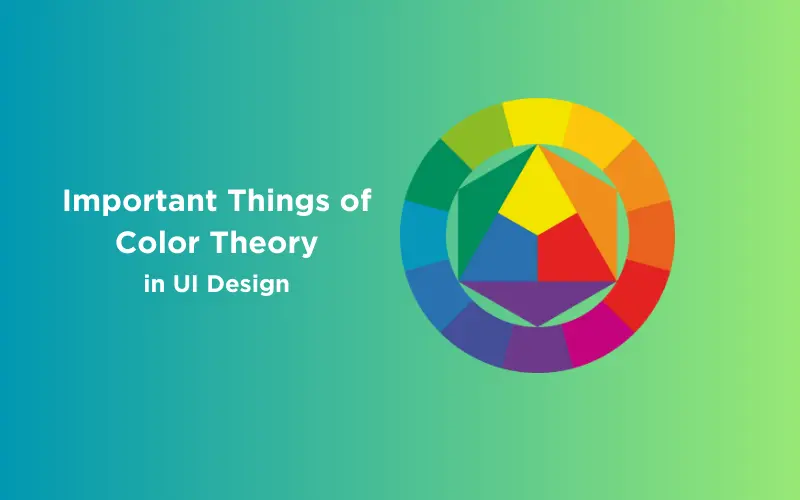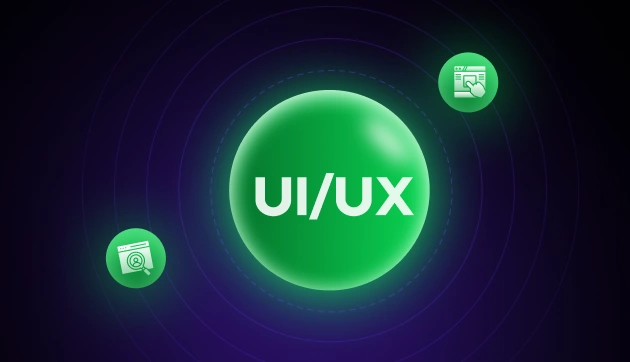
Mastering Design Systems: Consistency and Scalability in Digital Design
Mar 20, 2025 4 Min Read 2403 Views
(Last Updated)
In today’s fast-paced digital landscape, creating consistent and scalable products is paramount. Design systems offer a structured approach to achieving this goal.
By providing a centralized repository of reusable design assets and guidelines, design systems streamline the design and development process, enhance collaboration, and ultimately improve the user experience.
This might seem a bit confusing but worry not, this article is there to help you understand everything about design systems from their definition to their application. So, sit tight and read till the end to gain invaluable knowledge on design systems in UI/UX designing.
Table of contents
- What is a design system?
- The benefits of implementing a design system:
- Building a Design System
- Creating a Style Guide
- Developing a Component Library
- Establishing a Design Language
- Implementing a Design System Platform
- Ongoing Maintenance and Evolution
- Overcoming Challenges
- Best Practices for Design Systems
- Examples of Successful Design Systems
- Google's Material Design: A Comprehensive Design System
- Conclusion
What is a design system?
A design system is more than just a collection in UI designing. it’s a comprehensive framework that guides the design and development of digital products.
A design system encompasses:
- Style guide
A Design System typically includes a visual style guide, which sets rules for consistent visual presentation. It defines colors, fonts, and formatting.
Example: A company style guide might dictate using blue as the primary color, Arial as the main font, and a specific layout for reports.
- UI Components
UI components are the reusable elements that make up the building blocks of your interface. They range from basic elements like buttons and input fields to more complex components like navigation bars and cards. These components should be designed with consistency and accessibility in mind.
Example: A button component can have different states (default, hover, active, disabled) and variations (primary, secondary, outlined) defined within the design system.
- Pattern Library
A pattern library is a collection of pre-designed UI component combinations that solve specific design problems. It showcases how UI components can be used together to create common interface patterns. This helps designers and developers work efficiently by providing ready-made solutions.
Example: A pattern library might include patterns for product cards, search forms, and navigation menus.
- Design Tokens
Design tokens are the fundamental building blocks of a design system. They are essentially variables that represent specific design attributes like colors, typography, spacing, shadows, and more. By using tokens instead of hardcoded values, designers and developers can ensure consistency and maintainability throughout the product.
Example: Instead of using the hex code #3F51B5 for primary color, you would use a token like “primary-color”. This makes it easier to update the color across the entire system.
- Design Principles
Design principles are the guiding philosophy behind your design decisions. They define the overall look and feel of your product and ensure consistency across different parts of the interface. Examples of design principles include clarity, usability, accessibility, consistency, and efficiency.
Example: A design principle of “clarity” might dictate the use of simple language and clear visual hierarchy in all product interfaces.
- Documentation
A comprehensive guide to a design system. It includes detailed explanations of components, design patterns, and usage guidelines.
Example: Documentation for a button component might specify its states (normal, hover, clicked), dimensions, typography, and usage, ensuring consistency and efficient collaboration between designers and developers.
The benefits of implementing a design system:
· Consistency: A unified look and feel across all products and platforms.
· Efficiency: Accelerated design and development processes through reusable components.
· Scalability: Easier to maintain and expand products as the business grows.
· Improved Collaboration: Better communication and alignment between design and development teams.
· Enhanced User Experience: Consistent interactions lead to a more intuitive and enjoyable user experience.
Building a Design System
Creating a robust design system is a collaborative effort involving designers, developers, and other stakeholders. Here are the key steps:
- Auditing Existing Designs
This involves a thorough examination of your current design assets, including websites, apps, and marketing materials. Look for recurring patterns, and inconsistencies in color palettes, typography, spacing, and UI components. Identifying these discrepancies is crucial for establishing a unified design language.
- Defining Design Principles
Design principles are the philosophical backbone of your design system. They guide decision-making and ensure consistency. Examples of design principles include:
- Clarity: Information should be easily understandable.
- Consistency: Maintain a unified look and feel.
- Usability: Create intuitive and efficient user experiences.
- Accessibility: Design for users with disabilities.
- Responsiveness: Adapt to different screen sizes.
3. Creating a Style Guide
A style guide is a comprehensive document that outlines the visual elements of your brand. It includes:
- Color palette: Primary, secondary, and accent colors.
- Typography: Font families, sizes, weights, and spacing.
- Iconography: A set of standardized icons.
- Imagery guidelines: Style, tone, and usage of images.
4. Developing a Component Library
A component library is a collection of reusable UI elements. This includes:
- Basic components: Buttons, inputs, labels, and more.
- Complex components: Cards, navigation menus, modals, and other interactive elements.
- Component states: Different variations of components (hover, active, disabled).
5. Establishing a Design Language
Your design language is the overall aesthetic and feel of your product. It encompasses:
- Visual hierarchy: How elements are prioritized visually.
- Layout and spacing: Grid systems and white space usage.
- Motion and animation: Guidelines for creating engaging interactions.
- Tone and voice: The personality of your brand.
6. Implementing a Design System Platform
A design system platform is a tool that helps manage and share your design system. It can include features like:
- Component library: A centralized repository for UI components.
- Style guide: Documentation of design tokens and guidelines.
- Version control: Tracking changes to the design system.
- Collaboration tools: For teams to work together on the system.
7. Ongoing Maintenance and Evolution
Design systems are living documents. They require continuous updates to stay relevant and effective. This includes:
- Gathering user feedback: Identifying areas for improvement.
- Staying updated with design trends: Incorporating new design patterns.
- Addressing technical changes: Adapting to new technologies and platforms.
Overcoming Challenges
Implementing a design system can present challenges:
- Resistance to change: Overcoming resistance from teams accustomed to working without a system.
- Maintaining consistency: Ensuring adherence to design guidelines across different projects.
- Staying up-to-date: Keeping the design system aligned with evolving design trends and technologies.
To address these challenges, effective communication, training, and a strong commitment to the design system are essential.
Best Practices for Design Systems
· Start Small: Begin with core components and gradually expand the system.
· Involve the Entire Team: Ensure buy-in from all stakeholders.
· Prioritize Accessibility: Make sure your design system adheres to accessibility guidelines.
· Document Everything: Clearly document design decisions, usage guidelines, and best practices.
· Foster a Culture of Design: Encourage a design-centric mindset throughout the organization.
Examples of Successful Design Systems
Many tech giants have embraced design systems to great effect:
· Google’s Material Design: A comprehensive system that covers everything from typography to animation.
· Airbnb’s Design System: A focus on consistency and user experience across a complex platform.
· Salesforce Lightning Design System: A modular approach that enables rapid development.
. IBM: IBM’s design system has helped to modernize its brand and improve user satisfaction.
Google’s Material Design: A Comprehensive Design System
Google’s Material Design is perhaps one of the most well-known and influential design systems in the world. It’s a design language that provides a unified, consistent look and feel across all platforms and devices.
Material Design uses the physical world as its inspiration, specifically focusing on the properties of paper and ink. This metaphor provides a foundation for creating digital interfaces that feel tangible and intuitive.
Core Principles
· Material is the metaphor: The core metaphor is ink, paper, and light.
· Bold and graphic: Material design emphasizes bold colors and typography.
· Grid-based layout: A consistent grid system ensures balance and hierarchy.
· Responsive design: Adapts to different screen sizes and orientations.
· Motion: Subtle animations create a sense of fluidity and delight.
Components
Material Design provides a rich library of UI components, including:
· Basic components: Buttons, cards, text fields, checkboxes, and more.
· Navigation components: App bars, bottom navigation, tabs, and drawers.
· Feedback indicators: Progress indicators, snackbars, and dialogs.
· Lists: Simple and complex lists for displaying information.
· Menus: Drop-down menus, bottom sheets, and overflow menus.
Design Tokens
Material Design defines a comprehensive set of design tokens, including:
· Color palette: A rich set of primary, secondary, and accent colors.
· Typography: A typographic scale with different font weights and styles.
· Spacing: Consistent spacing units for creating a visual hierarchy.
· Shadows: Predefined shadows for creating depth and dimension.
Impact and Adoption
Material Design has had a profound impact on the design industry. It has been widely adopted by Android app developers and has influenced the design of countless other applications. Its focus on accessibility, usability, and visual appeal has made it a benchmark for modern design.
Challenges and Evolution
While Material Design has achieved significant success, it also faces challenges:
- Maintaining relevance: The rapidly evolving technological landscape demands continuous adaptation.
- Balancing consistency and innovation: Preserving the core principles of Material Design while incorporating new design trends.
- Addressing platform differences: Ensuring compatibility and optimal user experiences across diverse platforms.
To address these challenges and stay ahead of the curve, Google introduced Material Design 3. This iteration focuses on refinement and evolution, introducing:
- Updated color palette: A broader range of colors to cater to different branding needs.
- Refined typography: Enhanced readability and visual hierarchy.
- Modernized components: Updated UI elements to align with contemporary design trends.
By continuously evolving and adapting, Material Design aims to remain a leading design system in the industry.
If you are interested in more about design systems and how they impact user experience, consider enrolling for GUVI’s UI/UX Designing Course which teaches everything about the happening field in detail from scratch and also provides an industry-grade certificate!
Conclusion
In conclusion, a well-structured design system is a strategic asset that drives efficiency, consistency, and user satisfaction. By investing in a design system, organizations can create exceptional digital experiences that resonate with their audience.
Keeping in mind the best practices and challenges that design systems pose, you can excel in creating a seamless user experience that brings users nothing but joy!



















Did you enjoy this article?